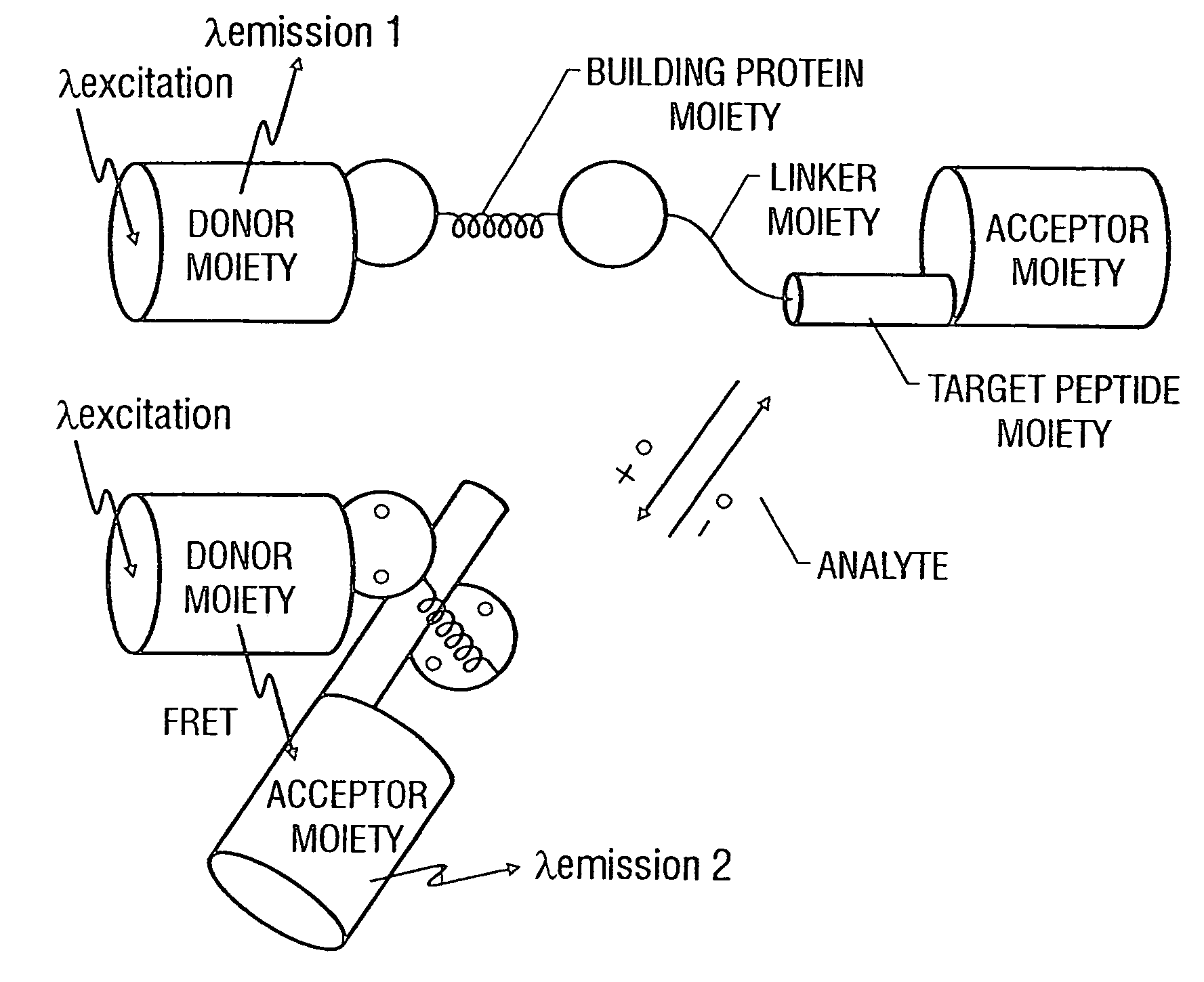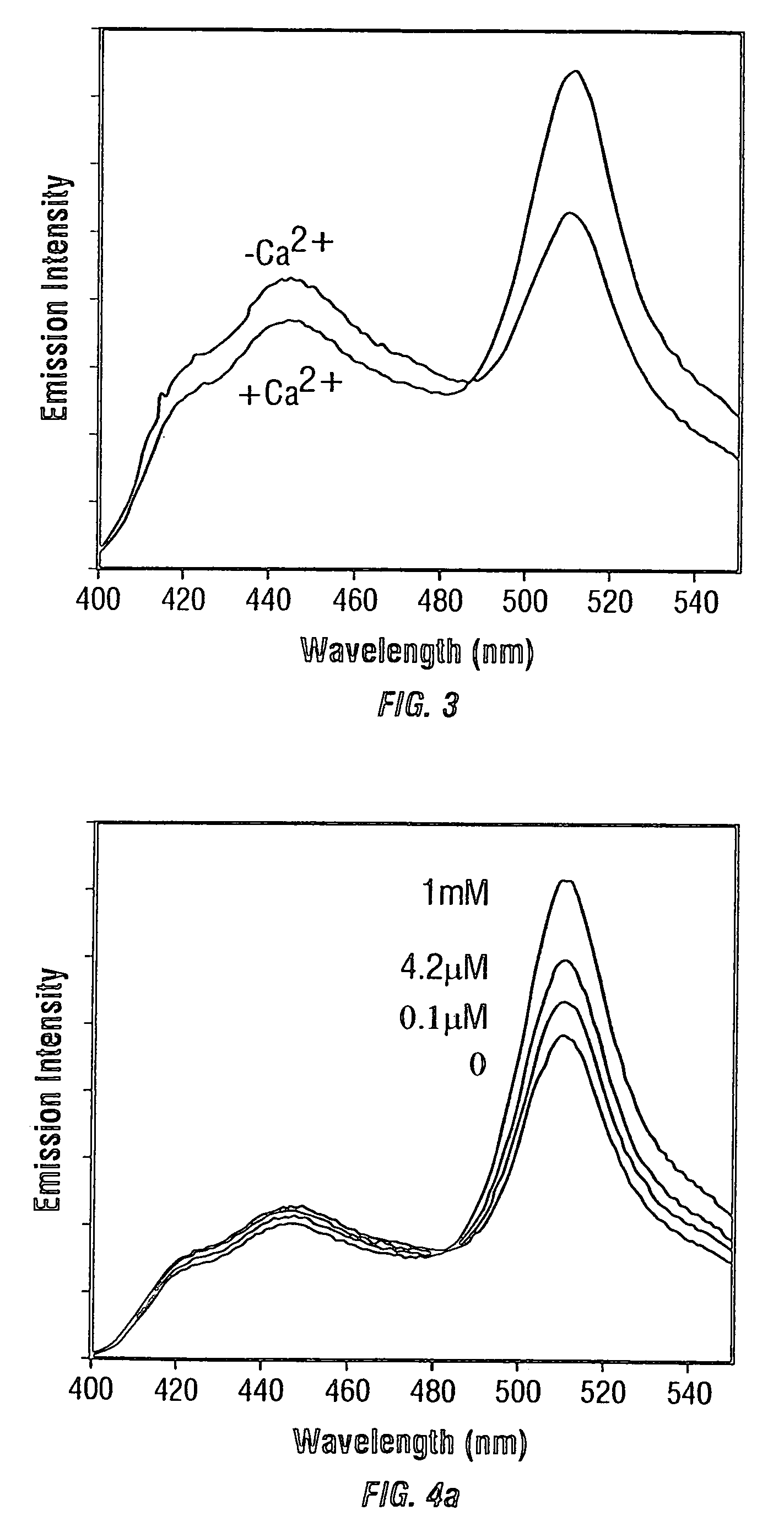Fluorescent protein sensors for detection of analytes
a technology of fluorescence protein and analytes, which is applied in the field of fluorescence protein sensor, can solve the problems of many technical problems of relative low molecular weight indicators, and achieve the effect of limiting the sensitivity of fret measuremen
- Summary
- Abstract
- Description
- Claims
- Application Information
AI Technical Summary
Benefits of technology
Problems solved by technology
Method used
Image
Examples
examples
Gene Construction
[0129]The cDNA of the GFP mutant P4-3 was amplified by PCR with a sense primer containing a BamHI site, and a reverse primer containing an SphI site and eliminating the GFP stop codon. See, for example, Heim, R. & Tsien, R. Y. Current Biol. 6:178–182 (1996). Likewise, the cDNA of S65T was amplified with a SacI site and an EcoRI site introduced to the 5′ and 3′ ends of the gene, respectively. Two restriction sites (SphI and SacI) were introduced by PCR into 5′ and 3′ ends of the CaM-M13 gene, respectively, using the pHY1 as a template. See, Porumb, T., et al. Prot. Engineering 7:109–115 (1994). All the amplification reactions were done by Pfu polymerase (Stratagene). The restricted products were ligated and cloned in-frame into the BamHI / EcoRI sites of PRSETB (Invitrogen). The modifications of the boundary regions between P4-3 and CaM and between M13 and S65T were performed by PCR or by a combined use of restriction enzymes, Klenow fragment of DNA polymerase I, T4 DN...
PUM
| Property | Measurement | Unit |
|---|---|---|
| diameter | aaaaa | aaaaa |
| dissociation constants | aaaaa | aaaaa |
| dissociation constants | aaaaa | aaaaa |
Abstract
Description
Claims
Application Information
 Login to View More
Login to View More - R&D
- Intellectual Property
- Life Sciences
- Materials
- Tech Scout
- Unparalleled Data Quality
- Higher Quality Content
- 60% Fewer Hallucinations
Browse by: Latest US Patents, China's latest patents, Technical Efficacy Thesaurus, Application Domain, Technology Topic, Popular Technical Reports.
© 2025 PatSnap. All rights reserved.Legal|Privacy policy|Modern Slavery Act Transparency Statement|Sitemap|About US| Contact US: help@patsnap.com



